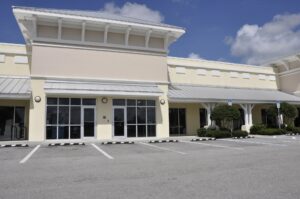Green concrete innovations are revolutionizing the construction industry, promising a more sustainable future. Traditionally, concrete production has been a major contributor to carbon emissions due to its high cement content. However, recent advancements have led to the emergence of green alternatives that significantly reduce CO2 emissions without compromising on performance. And many of these innovations are starting to find their way into construction projects today. Here are some of the amazing steps forward that are being taken to make concrete production more environmentally friendly.
Geopolymer Concrete
One example of innovative green concrete is geopolymer concrete, a product developed by researchers as an alternative to traditional cement-based concrete. Geopolymer concrete stands out because it uses industrial by-products, such as fly ash and blast furnace slag, instead of cement. By doing so, this type of concrete significantly reduces carbon emissions compared to conventional methods while also minimizing reliance on limited natural resources. The production process for geopolymer concrete involves mixing these industrial waste materials with alkaline activators like sodium or potassium silicate solutions. This chemical reaction results in the formation of a binder that hardens and provides structural strength to the mixture, just like cement does in traditional concrete.
This environmentally friendly material offers various advantages over traditional concrete. Not only does it reduce carbon emissions by up to 90%, but it also alleviates the burden on landfills by utilizing what would otherwise be waste products from industries. Additionally, geopolymer concrete exhibits excellent resistance against corrosion, fire, and chemicals.
Self-Healing Concrete
One of the more remarkable breakthroughs in green concrete innovations is self-healing concrete. This revolutionary material has the incredible ability to repair cracks and prolong the lifespan of structures, offering both economic and environmental benefits. The concept behind self-healing concrete involves incorporating tiny capsules filled with healing agents within the concrete matrix. When cracks form, these capsules rupture, releasing the healing agents that then initiate a chemical reaction. This reaction leads to the formation of new material that fills the cracks, effectively repairing the damaged area. By implementing self-healing concrete in construction projects, maintenance costs can be significantly reduced as regular repairs or replacements become unnecessary. This not only saves time and money but also minimizes waste generated from constant construction activities.
Translucent Concrete
The development of green concrete innovations is not just limited to reducing CO2 emissions or increasing durability; it also includes creating aesthetically pleasing structures that blend seamlessly with their surroundings. One such example is translucent concrete, made by embedding optical fibers into traditional concrete mixtures. This unique material allows natural light to pass through while maintaining structural integrity – perfect for energy-efficient buildings seeking to maximize daylighting. The possibilities are endless as researchers continue exploring new ideas and techniques that will change how we think about construction materials.
Get Your New Concrete Project Started With Georgia’s Wildcat Paving
If you’re ready to get a new concrete construction project up and running, call the experts at Georgia’s Wildcat Paving. We have years of experience helping organizations throughout Georgia by designing, constructing, and maintaining their concrete structures. Put our expertise to work for you. Contact us today to learn more and to schedule a free consultation.






